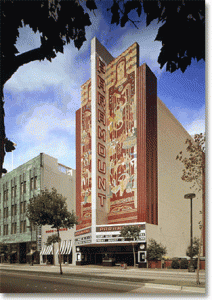
A Subdivision is the division of contiguous (adjoining) parcel(s) of improved or unimproved land shown on the latest equalized assessment roll for the purpose of sale, lease, or financing. Parcels separated by easements or public and railroad rights-of-way are contiguous. Condominium and community apartment projects (new construction and conversions), and the conversion of five or more existing dwelling units to a stock cooperative are Subdivisions. A Subdivider is a person, firm, corporation, partnership or association who subdivides real property for themselves or others.
What Code Regulates Subdivisions ?
The California Government Code – Subdivision Map Act (GC Section 66410 et seq.) regulates the subdivision of real property. The Revenue and Taxation Code (RTC Section 11511) also allows a County Assessor/ Tax Collector to subdivide a parcel and sell the “sufficient” part through a tax foreclosure auction.
The SMA is not a particularly clearly-written statute. The SMA has been sparingly litigated, and the few court decisions and Attorney General opinions that are available make a questionable contribution to an intuitive understanding of a complex set of regulations. Given that, the experience of competent Land Surveyors, City Surveyors/ Engineers, and title insurance underwriters are an invaluable resource for Subdividers. The subdivision process, however, is typically controlled by Planners, who are not generally as astute or interested in the vagaries of the SMA.
Are There Exceptions To The SMA ?
The SMA has several exclusions, including the following:
- cemetery plots
- mineral, oil and gas leases
- cellular communication leases
- agricultural and renewable energy leases
- partitioning a parcel for property tax assessment
- financing or leasing of new and existing commercial or industrial buildings on a single parcel
- financing or leasing of apartments, offices, stores, and similar residential, commercial, and industrial space
- property boundary adjustments between up to 4 parcels which do not create an additional new parcel (check with your jurisdiction for “map waiver” requirements).
What Does The SMA Require For Subdivisions ?
In general, the SMA requires a preliminary soils report and a recorded map (18 inches x 26 inches) showing the new property boundary lines and allows jurisdictions to mandate several requirements, including the following:
- dedications of public easements and rights-of-way
- construction of on-site and off-site public infrastructure
- development impact fees (e.g., traffic, storm drainage, sanitary sewer)
Maps are either Parcel Maps (up to 4 new parcels/ condominiums/ etc.) or Final Maps (5 or more new parcels/ condominiums/ etc.). Tentative Maps are required for Final Maps and may be required for Parcel Maps. Vesting Tentative Maps may be requested by the Subdivider. TMs and VTMs show the physical characteristics of the subdivision and adjoining area, including topography, water resources, and existing and proposed infrastructure/ roadway geometrics/ building footprints/ easements/ parcels. TMs and VTMs are typically approved by a Planning Commission and have a time expiration before which a Parcel or Final Map must be prepared and submitted to the jurisdiction for approval. Subdivisions may be subject to the California Environmental Quality Act (CEQA).
Parcel Maps have a more “streamlined” process than Final Maps. For example:
- PMs need not be co-signed by the City Engineer (City Surveyor is sufficient)
- public infrastructure construction is postponed until building construction commences
- PMs do not have public hearings at a City Council meeting after approval by the City Surveyor/ City Engineer.
Public infrastructure for Final Maps is required to be completed before the FM is approved, but the commencement of construction may be delayed until approval when the Subdivider executes a Subdivision Improvement Agreement and provides development bonds. While grading and infrastructure construction may commence before a PM or FM is approved, building permits cannot be issued (except for model homes) until a PM or FM has been filed with the County Recorder.
What Is A Vertical Subdivision ?
In general, property lines define the boundaries of a subdivided lot and are considered to extend from the “center of the earth to the heavens above” (vertically infinite). Vertical subdivisions create horizontal property boundaries (vertically limited) which may be below-ground (e.g., above a transit subway), above-ground (e.g., below an elevated transit structure), or both. Vertical subdivisions are often created to facilitate financing options and may literally “split” a building (e.g., separating ownership of a parking garage below from ownership of the occupied space above).
The interface between the Building Code and a vertical subdivision is typically complex. For instance:
- While the Building Code prohibits openings along a property line, a Vertical Subdivision may require an elevator and stair shafts that cross through a horizontal property line.
- While the Building Code requires a structural separation between buildings on adjoining properties, a Vertical Subdivision which “splits” a building necessitates that the lower portion of the building support the upper portion of the building.
For clarity on a subdivision map, Land Surveyors often include a three-dimensional diagram of the articulations of the property lines.
What Is A Certificate Of Compliance ?
Property owners may request a determination by a jurisdiction if their parcels were “legally” subdivided. If the jurisdiction determines that the subdivision of the parcel(s) complied with the SMA and any local ordinance in effect at the time of the land division, it will issue a Certificate of Compliance. If it does not make this determination, it will issue a Conditional Certificate of Compliance. Property owners who are issued Conditional Certificates are required to subdivide the parcels in accordance with the regulations in effect at the time the property owner purchased the property. In general, requests for CoCs are the result of a requirement by title insurance underwriters.
Until the SMA was amended in 1972, many jurisdictions did not have a local Parcel Map ordinance. In these jurisdictions, property owners could subdivide up op 4 parcels through grant deeds.
Check the Links below and your local jurisdiction’s website for additional information.
Links
BUILDING in CALIFORNIA
- Library
California Government Code